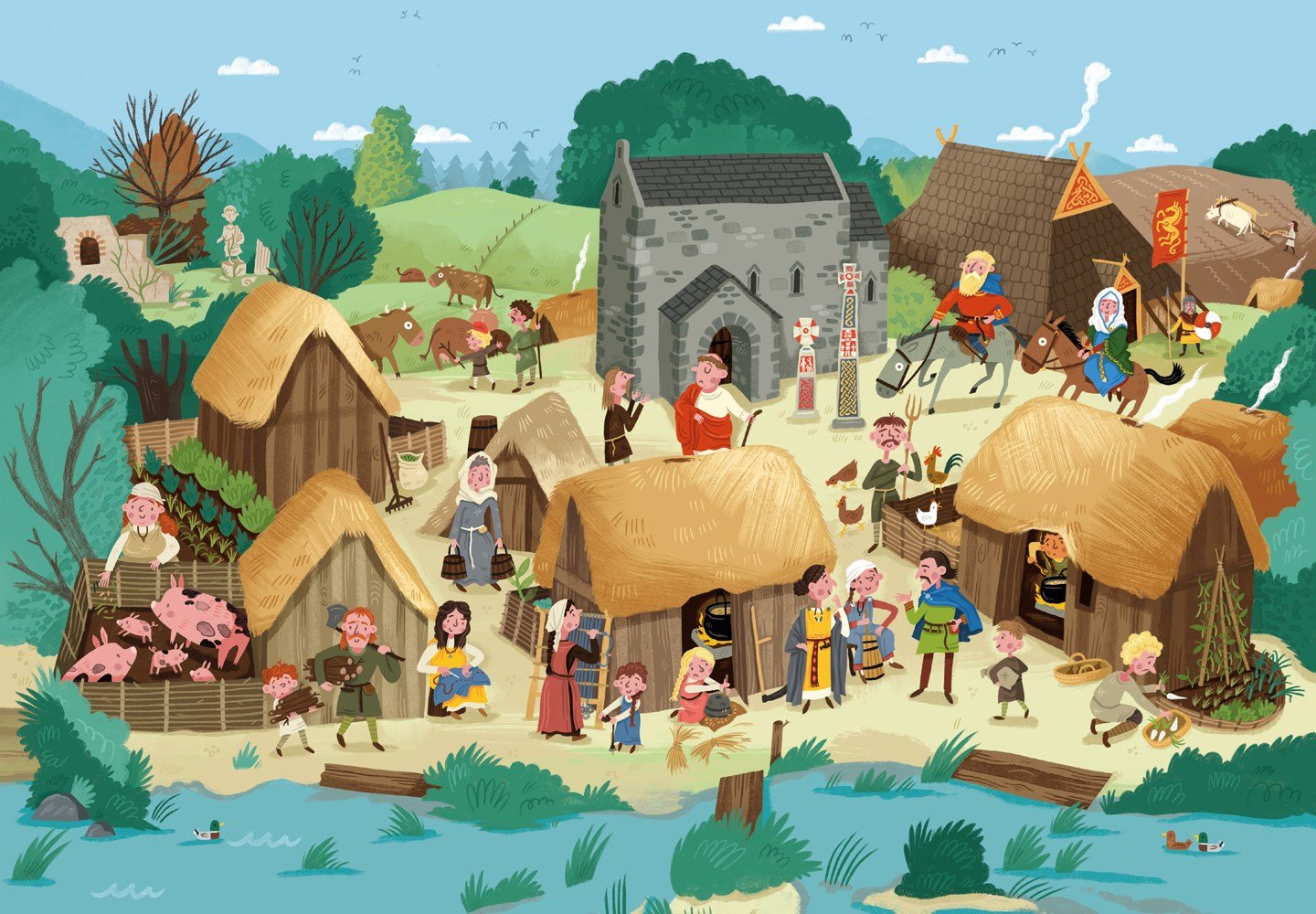Theme

In year 5, the question we are focusing on is 'So how dark were the dark ages?'


Here are some of the questions the children will be investigating in our history/theme topic - The Anglo-Saxons, this term:
Who were the Anglo-Saxons?
Where did they live?
Why did they invade?
Anglo-Saxons - KS2 History - BBC Bitesize click the link to find out some the answers.
Here the pupils answered the question:
'Why do you think the Anglo-Saxons invaded?'

Students in year 5 have been using the power of curiosity to research different geographical features, both human and physical features, in the United Kingdom.
They have been observing, measuring and recording these human and physical features, through the use of a wide range of methods and sources, e.g. sketch maps, plans, graphs, and digital technologies.
Year 5 will be learning to recognise the various geographical issues that affect people in different places and environments, and will engage in the great debate that is the effects of Deforestation. This challenging debate is where pupils will express and explain their opinions on geographical and environmental issues, while also using empathy to recognise and understand why other people may think differently.

Where does food come from?
The students in 5HM have been exploring their favourite foods and where they come from. Below are a few of the questions they will be searching answers for:
- Why does the food we buy from the local supermarkets come from different locations all over the world?
- Why is Fairtrade important?
- What is the position, and the significance of; latitude, longitude, Equator, Northern Hemisphere, Southern Hemisphere, The Tropica of Cancer, as well as Capricorn?
There are five main groups in relation to agriculture within the UK. These are:
- Subsistence: grown just for the farmer/producer and their family;
- Commercial: grown to sell – this could be small or large scale;
- Organic Farming: artificial fertilisers are not allowed to be used and pesticide use is severely restricted;
- Free-Range: animals, for the last part of the day, can roam freely outdoors;
- And Intensive Farming: a large number of the same crop or animal are grown together.
Farming in the UK
Some parts of the United Kingdom have soil that is in perfect condition to nurrish thier crops, while the purpose of others are used for cattle, sheep, pigs, and poultry.
In the northwest of England, Wales, and Scotland, farmers keep cattle and sheep. Sheep are enveloped in a warm and thick coat that enable them to survive the cold and harsh winters on the hills and moors. In the southeast of England and the lowlands of Scotland, is where grain, potatoes, and sugar beet are grown. Most cauliflowers that are distributed within the United Kingdom are actually originally grown in parts of the south-east.
Cattle Farming
A few breeds of cattle are used for more than one purpose, and therefore are farmed for both dairy and beef production. The are a variety of breeds of british beef, which include:
- Hereford
- Galloway
- Beef Shorthorn
- Aberdeen Angus
- and South Devon
For the next two weeks, the pupils in 5HM will be spending their time researching where their food comes from. This will require plenty of discussions, in-depth research, as well as teamwork and respect. They will also been looking into local produce as well as international production.
Fairtrade
Ask your child what this logo is and I’m sure they will be able to tell you what it is and the impact of it. You can click on the link below to go to the fairtrade website!

Both year 5 classes had the opportunity to visit Leighton Hall where they learnt all about the different herbs, fruits and vegetables, and explored where in the United Kingdom they are grown. In addition to this knowledge, they also planted their own garlic plants and created apple crumble on the fire, in the style of a true forest school connoisseur.
The Golden Age of Islam
This term, the children have been learning about Islam. They have been able to looking at different artifacts from the Early Islamic period.
Our question this term is:
Which of the Early Islamic achievement has the most effect on our lives today?
d
 Reedley Primary School
Reedley Primary School
.JPG)




